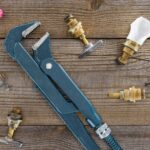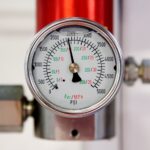Picture this: a quiet evening at home, suddenly interrupted by the unexpected clanging and banging of pipes. Such noise isn’t just a nuisance; it’s often a sign of a more significant underlying issue such as sagging pipes, which can lead to costly repairs. Pipe support brackets, when chosen and installed correctly, are your first line of defense in maintaining a robust plumbing system.
- Discover various types of pipe support brackets and how they combat common plumbing issues like sagging and noise.
- Learn expert-backed installation techniques to keep your pipes strong and in place over time.
- Uncover the role of strategic bracket positioning in reducing noise and preserving the integrity of your plumbing system.
This article equips you with knowledge on selecting and installing the right pipe support brackets, ensuring a long-lasting, silent plumbing network in your home or commercial space. Dive in to transform your approach to plumbing maintenance.
Choosing the Right Pipe Support Brackets for Installation: Prevent Sagging and Noise
When it comes to maintaining the efficiency and integrity of your plumbing system, selecting the right pipe support brackets is crucial. These components are designed to provide essential support and stability, preventing common issues such as pipe sagging and reducing noise levels.
There are various types of pipe support brackets available, each designed to address specific needs and challenges. For example, adjustable brackets offer flexibility in installation, making them ideal for pipes running through uneven surfaces. On the other hand, clamp brackets are perfect for securing pipes to walls or ceilings with precision.
Additionally, insulated pipe brackets are specifically engineered to minimize noise caused by pipe expansion and contraction. This feature is particularly important for systems carrying hot water, where temperature variations can cause vibrations and noise.
By understanding the unique attributes and functionalities of different pipe support brackets, you can make informed decisions that align with your system requirements and ensure optimal performance.
Installation Techniques to Prevent Sagging
Installing pipe support brackets correctly is vital to prevent sagging and ensure the long-term reliability of your plumbing installation. Begin by accurately measuring the distance between support points, as inadequate spacing is a common cause of sagging. Ideally, brackets should be installed at regular intervals to evenly distribute the weight of the pipes.
Ensure that the brackets are securely fastened, using appropriate fasteners or anchors suited to the material of your walls or ceilings. This prevents loosening over time, which can lead to pipe sags.
Another critical technique is aligning the brackets properly to maintain a straight and level pipe run. Misalignment can place undue stress on the system, increasing the risk of sagging and leaks. Utilize a spirit level and measurement tools to verify alignment during installation.
Lastly, if working with pipes prone to expansion, incorporate some flexibility by using expansion loops or bellows. This approach accommodates shifts without compromising the pipe structure, further preventing sagging.
Pipe Support Bracket Installation: Prevent Sagging and Noise with Proper Positioning
Proper positioning of pipe support brackets is crucial for reducing noise and preventing stress on your plumbing system. When installed correctly, brackets can significantly minimize vibrations and noise, leading to a quieter and more efficient operation in both residential and commercial spaces.
This strategic placement not only helps in maintaining the integrity of the plumbing but also extends the lifespan of the pipes by alleviating unnecessary pressure. Ensuring that brackets are evenly spaced and properly aligned can effectively support the pipes’ weight, preventing sagging which is a common cause of leaks and long-term damage.
A well-positioned pipe support bracket system reduces the stress exerted on connections and joints. This attention to detail prevents frequent repairs caused by pipe misalignments or fractures due to stress.
For best results, consider consulting with an experienced installer to determine the optimal bracket positioning. This can include assessing the type of plumbing material, the environment, and specific system requirements. Implementing a thoroughly planned installation can lead to a sound-free and low-maintenance plumbing system, contributing to a peaceful surrounding and operational efficiency.
Frequently Asked Questions on Pipe Support Bracket Installation
What types of pipe support brackets are available?
- Clamp brackets for rigid pipes.
- Hanger brackets for suspending pipes.
- Saddle brackets for additional support.
How do I choose the right bracket for my plumbing system?
Consider pipe material, diameter, and the environment where the piping is installed.
What are the common signs of sagging pipes?
Visible drooping, leaks at joints, and decreased water pressure.
How often should I check my pipe support brackets?
Inspect brackets annually or whenever you notice changes in your plumbing system.
Can proper bracket positioning really reduce noise?
Yes, correctly spaced brackets minimize vibrations and related noise.





